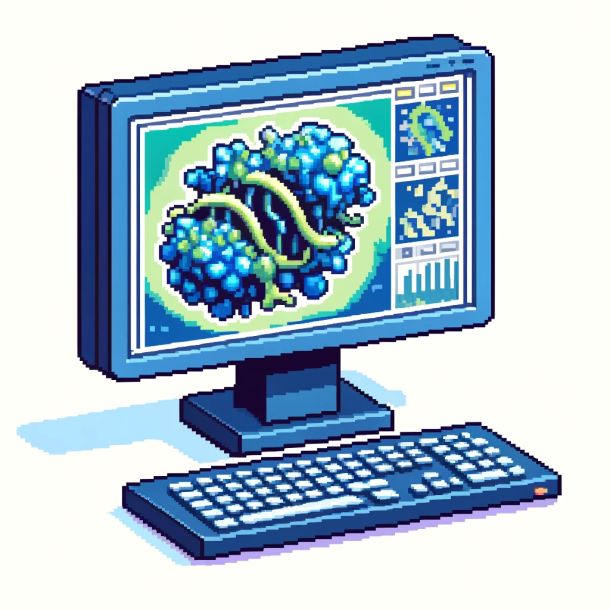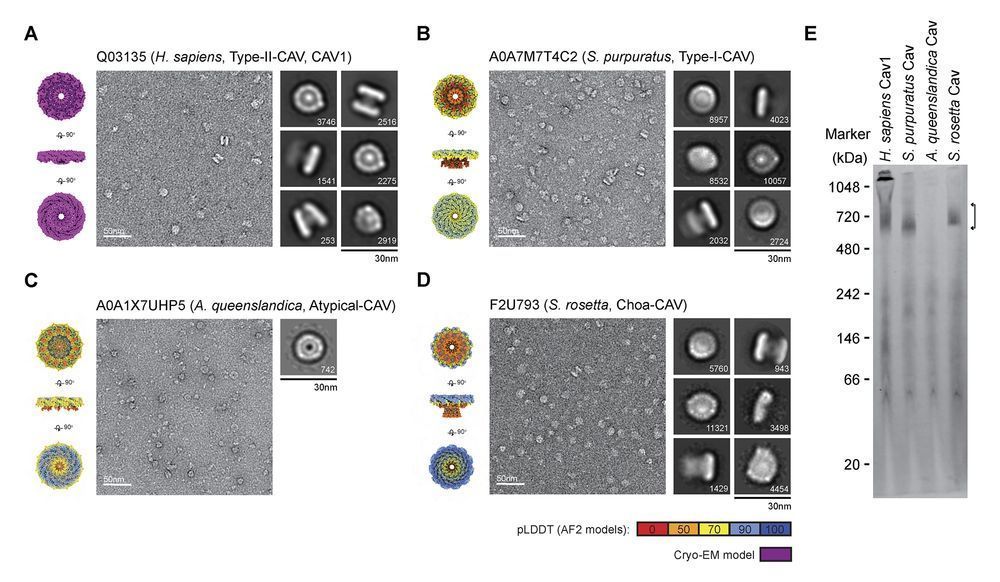#molstar now supports immersive AR/VR - enjoy
molstar.org/xr/
Matthieu Chavent
@matthchavent.bsky.social
Multiscale molecular dynamics, biological membranes interactions, CNRS researcher, group leader at @cbitoulouse.bsky.social
@matthchavent.bsky.social
Multiscale molecular dynamics, biological membranes interactions, CNRS researcher, group leader at @cbitoulouse.bsky.social
#molstar now supports immersive AR/VR - enjoy
molstar.org/xr/

Cardiolipin dynamics promote membrane remodeling by mitochondrial OPA1
www.nature.com/articles/s41...

Figure 1 from the review. Caption: Comparison of a schematic example showing static, time-dependent, and time-resolved experiments illustrated by a protein folding process. (a) A static experiment measuring the observable O$_{\text{exp}}$ is shown, which can be modelled as a distribution of simulated values, O$_{\text{calc}}$, representing a conformational ensemble of folded and unfolded states. (b) Shows a time-dependent experiment, where the equilibrium dynamics of reversible folding gives rise to measured transition times $\tau_1$ and $\tau_2$. These can be modelled as equilibrium dynamics, illustrated by a free energy (FE) surface along a chosen degree of freedom (D.O.F.) (c) A time-resolved experiment probes a non-equilibrium process, where the system begins at $t_{0}$ in the folded state. During the observation time $t$ the protein unfolds until $t_{\text{max}}$. At each time point, a distinct ensemble average, O$_{\text{exp}}$, can be observed, reflecting the proteins changing structure. This evolution can be modelled as distributions of O$_{\text{calc}}$ at each time point. These are shown together with a FE surface.
Integrative modelling of biomolecular dynamics
Time-dependent and -resolved experiments combined with computation provide a view on molecular dynamics beyond that available from static, ensemble-averaged experiments
Review w @dariagusew.bsky.social & Carl G Henning Hansen
doi.org/10.48550/arX...
Join our BioEmu project @msftresearch.bsky.social AI for Science. In Berlin DE or Cambridge UK:
aka.ms/bioemu-ml - #MachineLearning Researcher
aka.ms/bioemu-data - Data Engineer
aka.ms/bioemu-applied - Applied Researcher
aka.ms/bioemu-principal - Principal Applied Researcher
The students of the Computational Biology M.Sc. of Paris-Saclay (AMI2B) organize the Junior Conference on Computational Biology (JC2B) that will be held on November 13, 2025 at I2BC CNRS, Gif-sur-Yvette.
The call for contributions is open until October 20 2025:
bioi2.i2bc.paris-saclay.fr/jc2b/
Rigorous and creative work showing a novel way to think about protein-lipid interactions.
26.09.2025 17:34 — 👍 10 🔁 2 💬 0 📌 0Postdoc position available in the BioEmu team at @msftresearch.bsky.social AI for Science - Berlin DE or Cambridge UK. Looking for candidates with backgrounds in #MachineLearning #AI Biophysics or Bioinformatics
jobs.careers.microsoft.com/global/en/jo...
Ever wondered how to position organelles in bacteria? Wonder no more!
Happy to have contributed to this fantastic story from @cellforganized.bsky.social' lab.
The avenues this opens in the synthetic biology space are enormous!
Movie: Carboxysomes positioned in E. coli!
Preprint: shorturl.at/D6xVg

A great feature in @science.org on the recent LLM Hackathon in Berlin highlights how coding, collaboration, and FAIR data go hand in hand for accelerating materials discovery.
Read more in the article by Zack Savitsky ⬇️
www.science.org/content/arti...

'At the Scripps Research Institute, (...) we created the Computational Biology and Bioinformatics (CBB) affinity group, a trainee-led community for the discussion of computational biology/bioinformatics with the goal of facilitating knowledge exchange.'
21.09.2025 07:58 — 👍 8 🔁 7 💬 1 📌 0
A new preprint from my group by my PhD student Adria:
No attraction between proteins, they do not induce curvature, but they cluster on membranes.
One of the reasons why mesoscale modeling matters.
www.biorxiv.org/content/10.1...

Figure 3 from the paper with the caption: "Role of machine learning in de novo design of IDRs. (A) Machine-learning models can be trained on diverse data sources, from molecular dynamics simulations to annotations of cellular localization and protein structures from the Protein Data Bank. (B) Often implemented as neural networks using sequence-encoded features as input, these models can initially be trained on a limited region of sequence space as surrogate models. Through active learning, additional simulations are performed during the design campaign to generate new data, and the surrogate model is retrained on the expanded dataset to progressively improve its accuracy. (C) Machine-learning models have been developed to predict biophysical observables, biological annotations, and protein structures. When combined, machine-learning models can be used to identify a set of sequences that strike a trade-off between multiple design objectives, defining a Pareto front."
New review on computational design of intrinsically disordered proteins 🖥️🍝 by @giuliotesei.bsky.social @fpesce.bsky.social & 👴
doi.org/10.48550/arX...

Stability vs flexibility: reshaping archaeal membranes in silico
This ‘fundamental’ study characterises the mechanics and stability of bolalipids from archaeal membranes using a minimalist, physics-based computational model.
buff.ly/jCnRfkO

Very excited to share new work out today in @natchembio.nature.com on a new approach - FACES - for selectively imaging of phospholipids and other biomolecules at spatial resolutions down to individual membrane leaflets (1/n) www.nature.com/articles/s41...
15.09.2025 18:03 — 👍 160 🔁 67 💬 8 📌 7🔬 MD community call! 🧪
Join us for the “Learn • Connect • Innovate” Co-Designing Workshop Series, part of the @lumen-eu.bsky.social project to shape the future of open science tools, workflows, and collaboration across disciplines.
lumenproject.eu/learn-connec...

The latest @livecomsjournal.bsky.social tutorial "Molecular Dynamics: From Basics to Application" by Vollmers, Chen et al is out now! doi.org/10.33011/liv...
It includes comprehensive MD tutorials in GROMACS, covering forcefields, thermodynamic ensembles, long-range electrostatics and much more!
This is an really amazing opportunity. If you get it, you can essentially pick you institute. The package really is rather competitive.
10.09.2025 04:56 — 👍 13 🔁 6 💬 0 📌 0
We're hiring! Join our team at @fau.de ! We are seeking an enthusiastic candidate for a PhD position in our lab specializing in cutting-edge theoretical and computational membrane biophysics.
Please send your CV, and a statement of research interests via email.
www.biomemphys.nat.fau.de/jobs/

The endoplasmic reticulum donates lipids through a tunnel-like protein to help lysosomes expand.
Learn more in a new #SciencePerspective: https://scim.ag/45GWQrS

📢 We are hiring #PhD students and #Postdocs at the
@mpi-nat.bsky.social in
in the Department of Theoretical and Computational #Biophysics in Göttingen 🇩🇪! 🔗 check our current job adverts at www.mpinat.mpg.de/grubmueller and find your project. Submit your #application today! #job

our article "How PGL finds a sweet spot in phospholipid membranes: A combined multiscale MD and NMR study" is now freely available in its final version in @biophysj.bsky.social
www.sciencedirect.com/science/arti...
Exciting to see our protein binder design pipeline BindCraft published in its final form in @Nature ! This has been an amazing collaborative effort with Lennart, Christian, @sokrypton.org, Bruno and many other amazing lab members and collaborators.
www.nature.com/articles/s41...
Spread the word - we at @stanford-chemh.bsky.social are searching to fill a new junior faculty at the interface of molecular and computational science. See link below!
27.08.2025 03:27 — 👍 77 🔁 78 💬 0 📌 127 simulations of capturing hundreds of lipid scrambling events reveal mechanisms of lipid translocation.
However, according to reviewers, more evidence is needed on outside-the-groove scramblase activity.
buff.ly/sVdXMyM

Luciano, M., Tomba, C., Roux, A., & Gabriele, S. (2024). How multiscale curvature couples forces to cellular functions. Nature Reviews Physics, #EpithelialMechanicsReview www.nature.com/articles/s42...
22.08.2025 07:01 — 👍 16 🔁 6 💬 0 📌 0
Out today in @nature.com: Together with the Honigmann, Shevchenko, Drobot and Hof labs, we present a general workflow for imaging the localization and transport of individual lipids in cells and mapping their metabolism.
www.nature.com/articles/s41...

Tour de force on the kinetics and mechansms of lipid transport in cells through exquisite use of bifunctional probes by @nadlerlab.bsky.social and colleagues. Such an exciting time for the field. www.nature.com/articles/s41...
21.08.2025 02:07 — 👍 29 🔁 6 💬 1 📌 0
🔬 Coarse-Grained Modeling @ ACS Fall 2025 — Program Out Now! 🚀
📍 Washington DC | Aug 17–21
- Wed, Aug 20 AM: LNPs — nucleic acid delivery → viral entry simulations
- Wed, Aug 20 PM: Proteins & multiscale modeling
- Thu, Aug 21 AM: Methods & industry
@szczukam.bsky.social , PhD student in my lab, will be in DC for #acsfall2025 and will present her project about coarse-graining small molecules and fragments in collaboration with @pauloctsouza.bsky.social and @tbereau.bsky.social
14.08.2025 05:09 — 👍 1 🔁 0 💬 0 📌 0
Han, Connolly, Ohi, Kenworthy et al. explore the evolutionary history of #caveolins. Using computational predictions & #CryoEM, the authors show both animal & choanoflagellate caveolins assemble into amphipathic disks composed of seven conserved structural elements. rupress.org/jcb/article/...
07.08.2025 16:15 — 👍 17 🔁 6 💬 0 📌 1